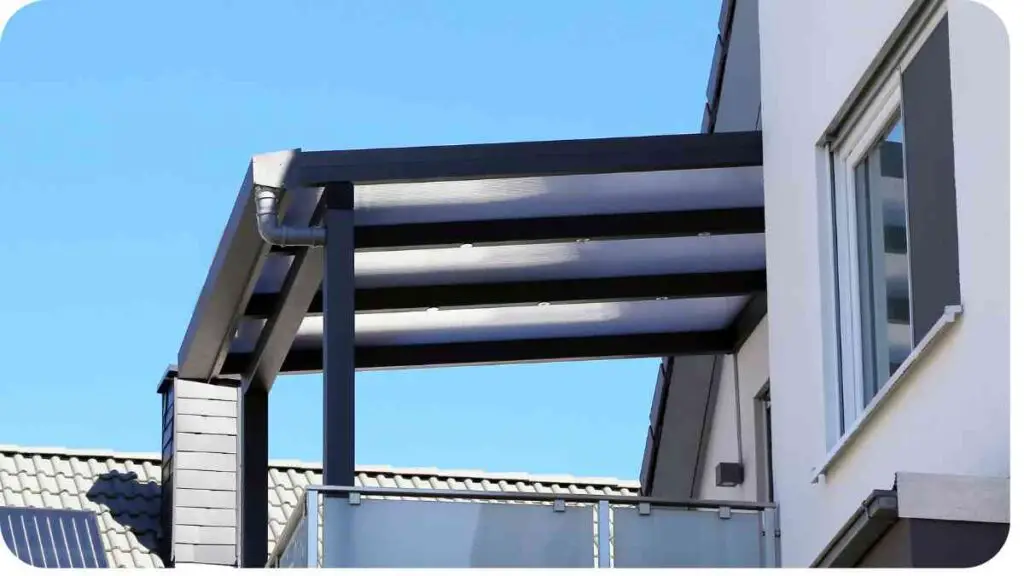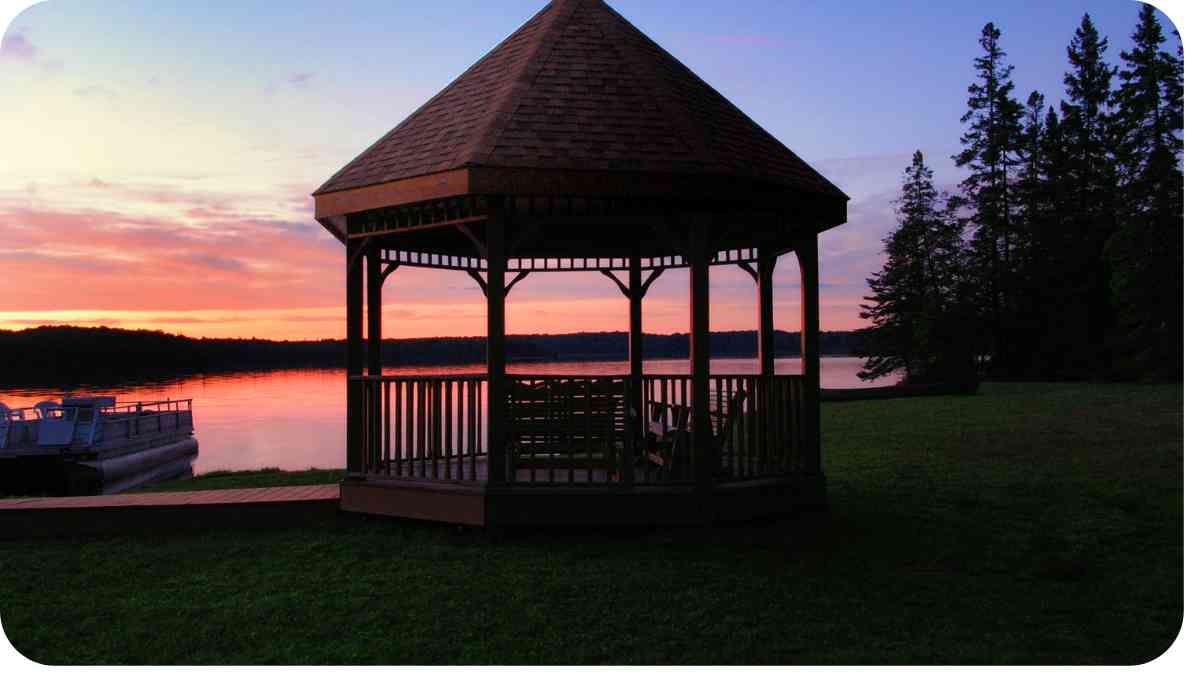Creating a dreamy ambiance for weddings, events, or even home decor often involves draping a canopy. The art of canopy draping can transform any space into a magical setting, but it requires precision and creativity.
In this comprehensive guide, we’ll delve into the process of draping a canopy, from understanding its importance to mastering different techniques.
| Takeaways |
|---|
| 1. Canopy draping adds elegance and charm to any event or space. |
| 2. Selecting the right fabric is crucial for achieving the desired aesthetic. |
| 3. DIY canopy draping can be a cost-effective and rewarding project with the right guidance. |
| 4. Attention to detail and proper planning are key to successful canopy draping. |
| 5. Professional canopy draping services offer expertise and convenience for larger events. |
2. What is Canopy Draping?

Canopy draping involves elegantly arranging fabric over a frame to create a canopy or tent-like structure. This technique is commonly used in weddings, parties, and outdoor events to add sophistication and charm to the venue. By carefully selecting fabrics and arranging them in various styles, you can achieve different aesthetics, from romantic and whimsical to modern and minimalist.
Transform your outdoor space with elegance and functionality by following our comprehensive guide on building a canopy over your window. Enhance your home’s aesthetic appeal effortlessly.
3. Importance of Canopy Draping
Canopy draping serves both aesthetic and practical purposes. Not only does it enhance the visual appeal of a space, but it also helps define areas, provide shade, and create a focal point for guests. Whether you’re hosting an intimate gathering or a grand celebration, canopy draping sets the stage for memorable experiences.
4. Types of Canopy Draping
Table 1: Types of Canopy Draping
| Type | Description |
|---|---|
| Flowing Fabric | Soft, billowing fabric draped from the center of the canopy, creating an ethereal look. |
| Swag Style | Fabric is gathered and draped in swags along the edges of the canopy, adding dimension and texture. |
| Tent Canopy | Fabric is stretched over a frame to create a tent-like structure, suitable for outdoor events. |
| Minimalist Canopy | Clean lines and simple draping techniques create a modern and understated canopy design. |
Each type of canopy draping offers a unique aesthetic, allowing you to tailor the design to suit your event theme and personal style.
5. Materials Needed for Canopy Draping
Before you begin draping your canopy, gather the necessary materials:
- Fabric (such as chiffon, satin, or tulle)
- Canopy frame or structure
- Ladder or step stool
- Hooks or clips
- Decorative elements (optional)
6. Step-by-Step Guide to Draping a Canopy
Draping a canopy may seem daunting, but with the right approach, it can be a rewarding DIY project. Follow these steps for a successful outcome:
Shield your patio from the elements and create a cozy outdoor retreat with our step-by-step guide on putting up a patio canopy. Enjoy al fresco living in style and comfort.
Table 2: Step-by-Step Guide to Draping a Canopy
| Step | Description |
|---|---|
| Step 1: Prepare | Set up the canopy frame in the desired location and gather all necessary materials. |
| Step 2: Measure | Measure the length and width of the canopy frame to determine the amount of fabric needed. |
| Step 3: Attach | Secure one end of the fabric to the top center of the canopy frame using hooks or clips. |
| Step 4: Drape | Gently drape the fabric over the frame, adjusting it as needed to create the desired effect. |
| Step 5: Secure | Use additional hooks or clips to secure the fabric along the edges of the canopy frame. |
| Step 6: Arrange | Arrange the fabric to create swags, gathers, or other decorative elements according to your preference. |
With patience and attention to detail, you can achieve professional-looking results without the need for expensive equipment or expertise.
7. Tips for Successful Canopy Draping

Mastering canopy draping requires practice and attention to detail. Here are some tips to help you achieve stunning results:
- Choose the Right Fabric: Select lightweight, flowing fabrics like chiffon or tulle for a romantic look, or opt for heavier fabrics like satin for a more luxurious feel.
- Consider the Venue: Take into account the size and layout of the venue when planning your canopy draping. Choose a design that complements the space and enhances its features.
- Experiment with Colors: Don’t be afraid to play with color! Consider incorporating bold hues or subtle tones to add visual interest to your canopy.
- Practice Beforehand: If you’re new to canopy draping, practice on a smaller scale before tackling a larger project. This will help you refine your technique and avoid mistakes.
- Pay Attention to Details: Take the time to ensure that the fabric is evenly draped and securely attached to the frame. Attention to detail can make all the difference in achieving a polished look.
8. Common Mistakes to Avoid
Even seasoned decorators can make mistakes when draping a canopy. Here are some common pitfalls to watch out for:
- Using the Wrong Fabric: Choosing the wrong type of fabric can result in a drab or unflattering canopy. Make sure to select fabrics that are suitable for draping and complement your overall design aesthetic.
- Overcrowding the Canopy: Avoid overloading the canopy with too much fabric or decorative elements. This can make the space feel cluttered and detract from the overall effect.
- Ignoring Safety Precautions: When setting up your canopy, always follow safety guidelines and ensure that it is securely anchored to prevent accidents or injuries.
- Neglecting Lighting: Lighting plays a crucial role in enhancing the ambiance of your canopy. Experiment with different lighting techniques, such as string lights or uplighting, to create a magical atmosphere.
By being mindful of these common mistakes, you can ensure that your canopy draping project goes smoothly and yields beautiful results.
Maximize your deck’s potential for relaxation and entertainment with our expert tips on installing a canopy. Elevate your outdoor living experience seamlessly.
9. Examples of Beautiful Canopy Draping
To inspire your own canopy draping endeavors, here are some stunning examples of canopy designs:
- Romantic Garden Wedding: Soft, flowing fabric draped from a wooden pergola creates a romantic backdrop for exchanging vows in a garden setting.
- Bohemian Beach Party: Colorful scarves and sheer fabrics draped from bamboo poles evoke a bohemian vibe for a beachside celebration.
- Elegant Ballroom Affair: Luxurious satin fabric cascades from a chandelier to create an elegant canopy for a formal ballroom event.
- Cozy Outdoor Retreat: Rustic burlap fabric draped over a pergola transforms an outdoor space into a cozy retreat for intimate gatherings.
Whether you prefer whimsical and romantic or sleek and modern, there’s a canopy draping style to suit every taste and occasion.
Experience hassle-free setup and usage of your slant leg canopy with our detailed guide on opening a slant leg canopy. Enjoy outdoor events and gatherings with ease.
10. DIY vs. Professional Canopy Draping

While DIY canopy draping can be a fun and rewarding project, there are times when hiring a professional may be the better option. Here’s a comparison of the two approaches:
DIY Canopy Draping:
- Cost-Effective: DIY canopy draping allows you to save money on labor costs and have more control over the materials used.
- Personal Touch: By draping the canopy yourself, you can tailor the design to perfectly suit your vision and style.
- Learning Experience: Draping a canopy can be a valuable learning experience, allowing you to develop new skills and unleash your creativity.
Efficiently dismantle your canopy like a pro with our easy-to-follow instructions on removing a master canopy. Simplify maintenance and storage effortlessly
Professional Canopy Draping:
- Expertise and Experience: Professional decorators have the expertise and experience to create flawless canopy designs and handle any challenges that may arise.
- Time-Saving: Hiring a professional saves you time and effort, allowing you to focus on other aspects of event planning.
- Quality Assurance: Professionals use high-quality materials and techniques to ensure that your canopy looks impeccable and withstands the rigors of the event.
Ultimately, the choice between DIY and professional canopy draping depends on your budget, timeline, and personal preferences.
11. Cost of Canopy Draping
The cost of canopy draping can vary depending on factors such as the size of the canopy, the type of fabric used, and whether you choose to DIY or hire a professional. Here’s an overview of the typical costs involved:
Table 3: Cost of Canopy Draping Materials
| Item | Cost Range |
|---|---|
| Fabric (per yard) | $5 – $20 |
| Canopy Frame | $50 – $200 |
| Hooks or Clips | $10 – $30 |
| Decorative Elements | $20 – $100 |
| Professional Services | $200 – $1000+ |
Keep in mind that these are just estimates, and actual costs may vary depending on your location and specific requirements.
12. FAQs about Canopy Draping
Q: Can I reuse the fabric after draping the canopy?
A: Yes, many fabrics used for canopy draping can be reused for other projects or events. Simply remove the fabric from the canopy frame and store it carefully until needed again.
Q: How do I clean the fabric after the event?
A: The cleaning method will depend on the type of fabric used. Most lightweight fabrics like chiffon or tulle can be hand-washed or machine-washed on a gentle cycle. Be sure to follow the manufacturer’s instructions for best results.
Q: Can I customize the canopy draping to match my event theme?
A: Absolutely! Canopy draping is highly customizable, allowing you to choose fabrics, colors, and styles that align with your event theme and decor.
Q: Do I need any special equipment to drape a canopy?
A: While specialized equipment like canopy frames and hooks may be helpful, you can also improvise with household items like ladders and clothespins to achieve similar results.
13. Conclusion
Draping a canopy is a creative and rewarding way to elevate any event or space. Whether you’re planning a wedding, party, or simply want to add a touch of elegance to your backyard, canopy draping offers endless possibilities for customization and expression. By following the tips and guidelines outlined in this article, you’ll be well-equipped to create stunning canopy designs that leave a lasting impression on your guests.
So, roll up your sleeves, unleash your creativity, and get ready to drape a canopy that will take your event to the next level!
Further Reading
- ShipOur.Wedding: Tent Draping – A Simple Guide: This comprehensive guide provides step-by-step instructions for draping tents at events, offering valuable insights and tips for achieving professional-looking results.
- Nunez Party Rentals on TikTok: Watch this informative TikTok video for a visual demonstration of tent draping techniques, courtesy of Nunez Party Rentals.
- WeddingWire Forum: DIY Tent Draping: Join the discussion on WeddingWire’s forum to learn from fellow DIY enthusiasts and get advice on draping tents for weddings and other events.
FAQs
How do I choose the right fabric for canopy draping?
Select lightweight, flowing fabrics like chiffon or tulle for a romantic look, or opt for heavier fabrics like satin for a more luxurious feel.
Can I reuse the fabric after draping the canopy?
Yes, many fabrics used for canopy draping can be reused for other projects or events. Simply remove the fabric from the canopy frame and store it carefully until needed again.
What’s the best way to clean the fabric after the event?
The cleaning method will depend on the type of fabric used. Most lightweight fabrics like chiffon or tulle can be hand-washed or machine-washed on a gentle cycle.
Can I customize the canopy draping to match my event theme?
Absolutely! Canopy draping is highly customizable, allowing you to choose fabrics, colors, and styles that align with your event theme and decor.
Do I need any special equipment to drape a canopy?
While specialized equipment like canopy frames and hooks may be helpful, you can also improvise with household items like ladders and clothespins to achieve similar results.

I am Hellen James, a professional handywoman with expertise in improving home and garden spaces by using pergolas, gazebos, and tents.


